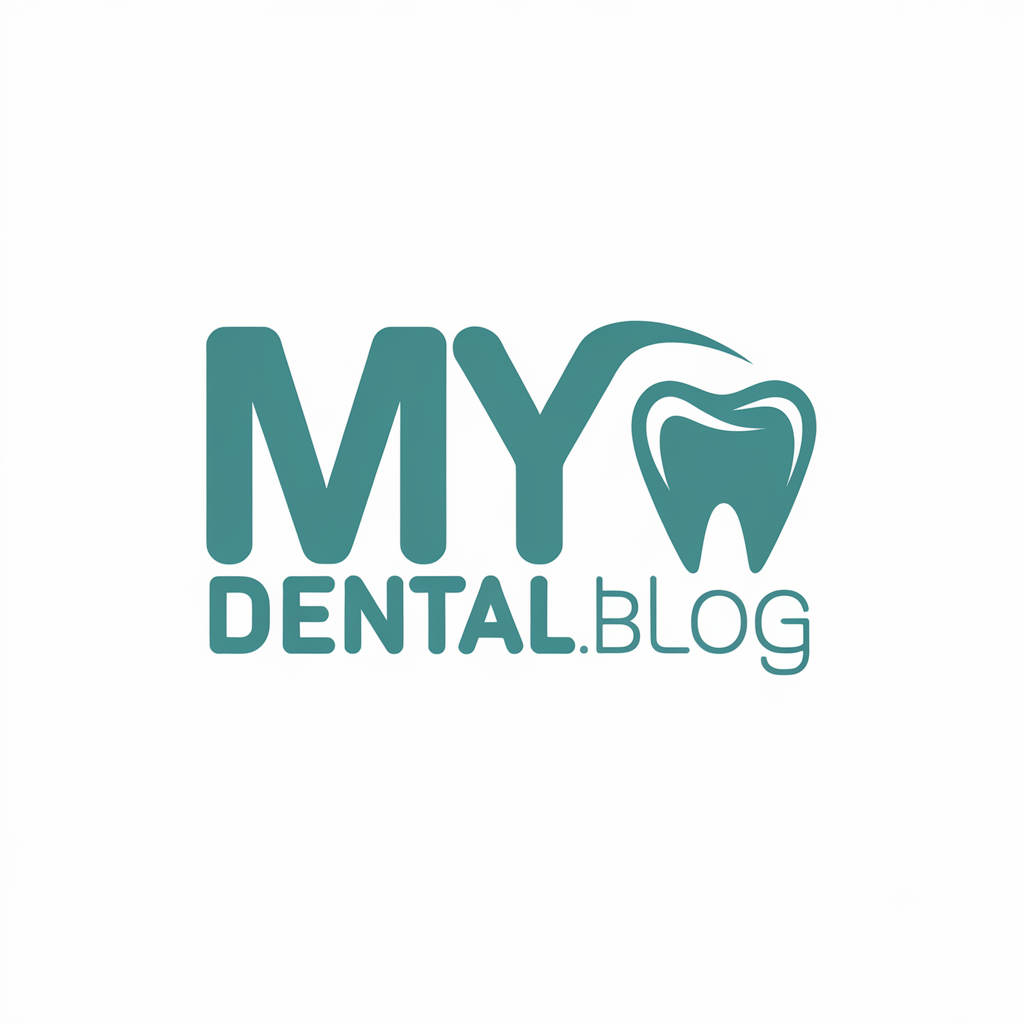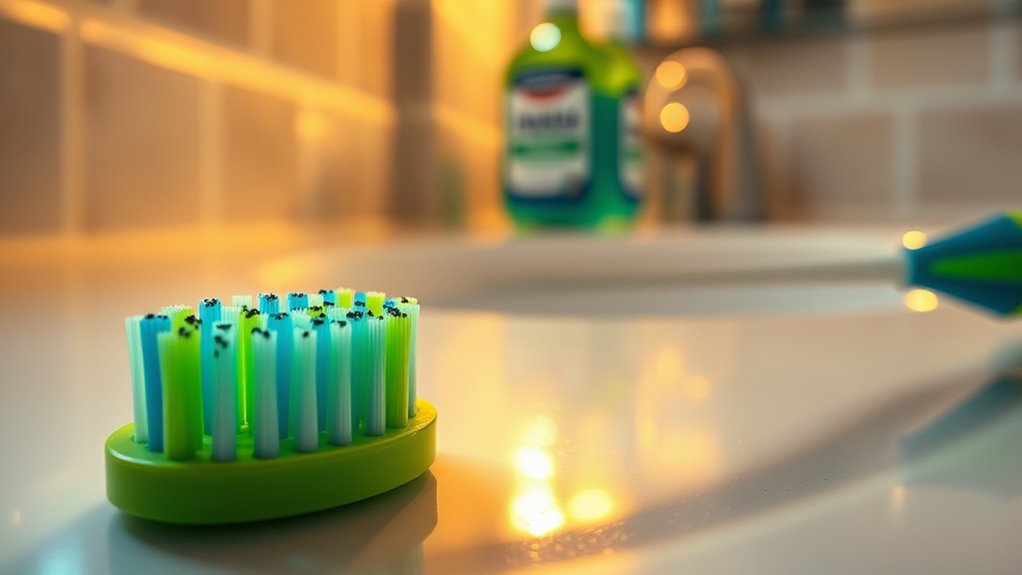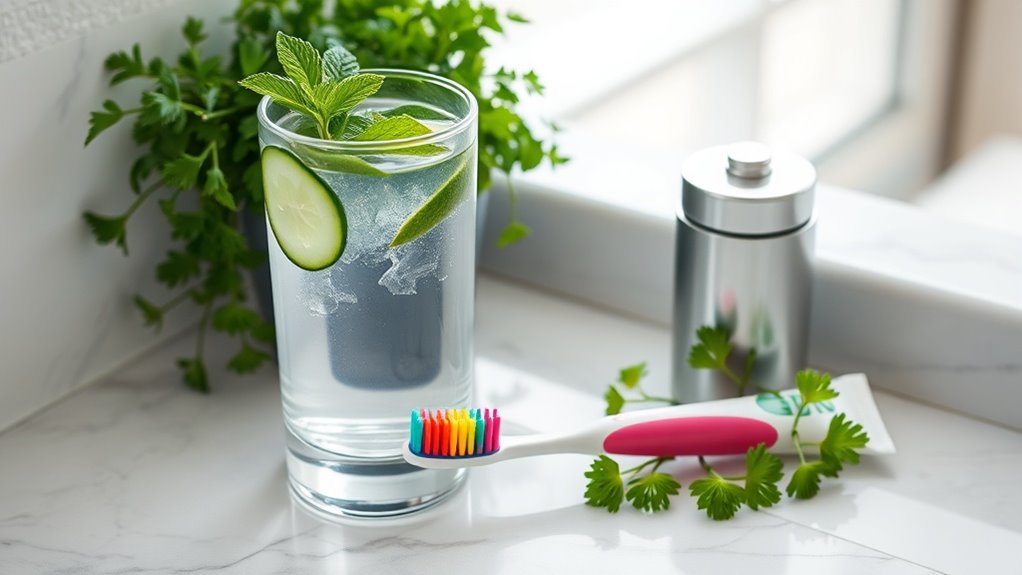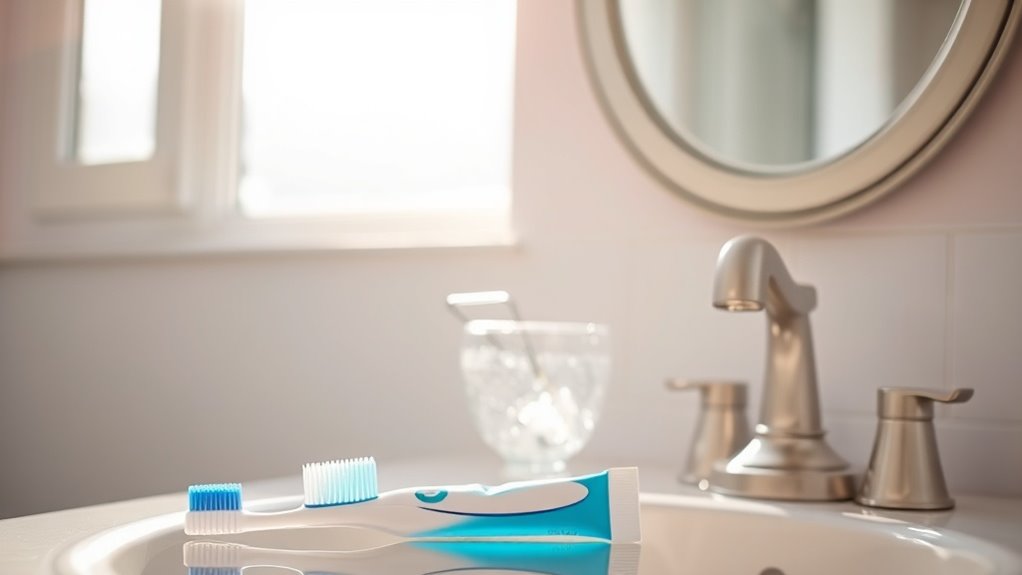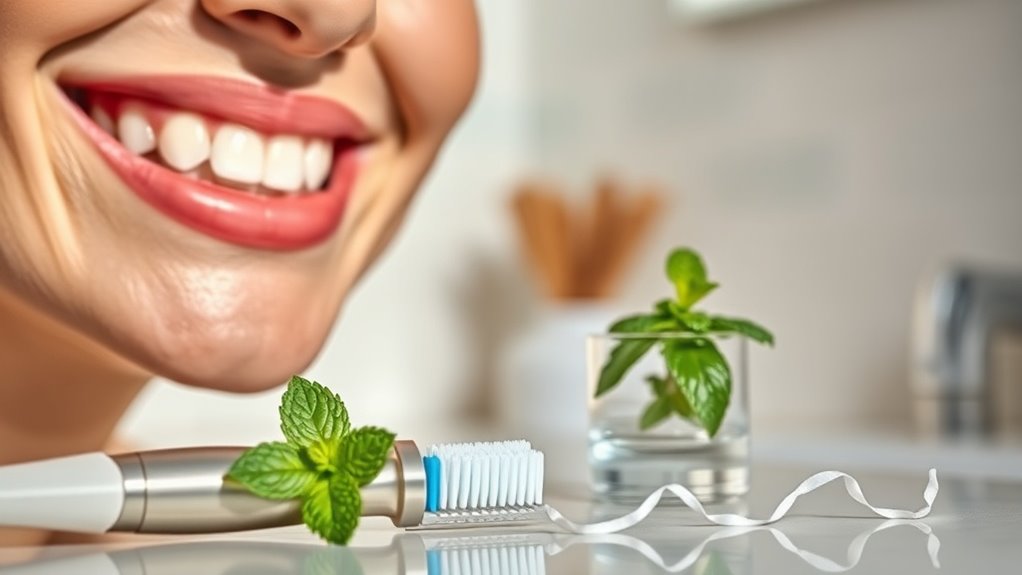The Hidden Dangers in Your Toothbrush (You Won’t Believe #3!)
Your toothbrush might seem harmless, but it’s hiding some serious risks that could affect your health. Bacterial growth and cross-contamination are just the start. Have you ever considered what lurks in those bristles? Mold can thrive if it’s not stored properly, leading to potential infections. And that’s not all. There are other factors at play that you might not even be aware of. Let’s uncover the hidden dangers together.
Bacterial Growth: A Silent Threat
Although you might think your toothbrush is a clean tool for maintaining oral hygiene, it can actually harbor a surprising amount of bacteria. Many of us don’t realize the toothbrush dangers lurking in our bathroom.
When you brush, tiny particles from your mouth can cling to the bristles, creating a breeding ground for germs. These bacteria can multiply rapidly, especially if your toothbrush is stored in a damp environment.
You might feel a sense of belonging in your dental care routine, but neglecting your toothbrush’s cleanliness can jeopardize that. Imagine sharing a laugh with friends about your dental habits, only to find out that your brush could be a hidden threat. Regularly replacing your toothbrush every three to four months is vital to prevent bacterial growth and ensure effective cleaning.
To truly care for your oral health, it’s essential to replace your toothbrush regularly and store it upright, away from moisture. Take this small step to ensure you’re not inviting harmful bacteria into your mouth.
Cross-Contamination: Sharing More Than You Think
Your toothbrush isn’t just a personal tool; it can unintentionally become a source of cross-contamination, especially if it’s stored near other family members’ brushes.
You mightn’t realize how easily germs can spread in your bathroom. Here are three key points to consider:
-
Proximity Matters: Keeping your toothbrush too close to others can lead to the transfer of bacteria, especially if their brushes touch yours.
-
Shared Holders: If you use a communal toothbrush holder, it can harbor germs from multiple brushes, contaminating yours.
-
Worn Bristles: An old or frayed brush can trap bacteria, and when you share a bathroom, those germs can find their way to your brush. Additionally, worn-down enamel can lead to increased sensitivity and discomfort, making it even more crucial to maintain proper oral hygiene practices.
To protect yourself and your loved ones, store your toothbrush separately and replace it regularly.
Mold Formation: The Unseen Invader
While you may not notice it at first, mold can quietly invade your toothbrush, posing hidden dangers to your oral health. This unwelcome guest thrives in the damp environment of your bathroom, especially if your toothbrush isn’t stored properly.
You might think your toothbrush is safe, but microscopic mold spores can settle in the bristles, multiplying quickly. When you brush, you could be introducing these harmful spores into your mouth, which can lead to infections or exacerbate allergies.
To protect yourself, regularly inspect your toothbrush for any signs of mold. If you spot any, it’s time to toss it out and grab a new one.
Remember, a clean toothbrush is essential for maintaining a healthy smile. By being aware and proactive, you’ll not only safeguard your health but also feel more connected to a community that values wellness.
Let’s keep our smiles fresh and mold-free together!
Improper Storage Methods: A Recipe for Disaster
Storing your toothbrush in a closed container might seem like a good idea for keeping it clean, but it can actually create the perfect breeding ground for bacteria.
Instead, you want to ensure your toothbrush has the right environment to stay fresh and healthy. Here are three tips to keep your toothbrush safe:
-
Air it Out: Always store your toothbrush upright, allowing it to air dry. This helps prevent moisture buildup, which bacteria love.
-
Avoid Sharing: Sharing toothbrushes is a big no-no. It can transfer harmful bacteria and viruses between you and your loved ones.
-
Keep It Separate: Store your toothbrush away from others to reduce the risk of cross-contamination. A little space goes a long way! Additionally, maintaining a healthy oral microbiome is essential for overall well-being, so keeping your toothbrush clean is crucial for oral microbiome health.
Wear-Related Dangers: Time to Replace?
Even the most diligent brushers can overlook the wear and tear that occurs on their toothbrushes over time. You mightn’t realize it, but worn bristles can lead to ineffective cleaning, leaving plaque and bacteria behind. If your bristles are frayed or splayed, it’s time to make a change. Your smile deserves better!
Replacing your toothbrush every three to four months is essential, but also keep an eye on its condition. If you’ve recently been sick, swap it out sooner to avoid reintroducing germs. Worn-out bristles can harm your teeth instead of helping them, making it crucial to stay vigilant about the state of your toothbrush.
Remember, you’re not just caring for your teeth; you’re investing in your overall health and well-being.
When you choose to update your toothbrush, you’re taking a small but powerful step toward better hygiene. Embrace the change—your mouth will thank you!
